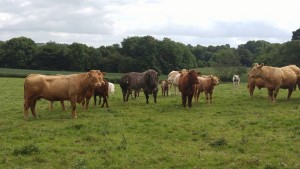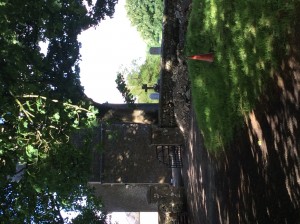Brad and I are both certified nutrient management planners, so we started our day with one of TEAGASC’s nutrient management, Michael Quinn. Michael showed us the system that TEAGASC uses. In Ireland, farmers who are want to intensive must have a nutrient management plan. When farmers produce more then 179 kg of nitrogen per ha or when they have .81 cows per acre then they must have a nutrient management plan and they are regulated to follow it. Farmers must have soil samples done with a sample done for about every 5 ha, turn in records for fertilizer and slurry applications, records for feed inputs, and they must also turn in receipts. Farmers can be inspected at any time and receipts will be checked at that time to make sure they match. Those farmers who produce less then 175 kg of nitrogen per ha are not regulated, but they must have a nutrient management plan. They could be inspected if there is a problem or if their name is pulled out of the lottery system.
Brad and I then took some time at lunch to visit Mullingar Pewter Factory.
Then we traveled to the farm of Billy Small for a beef discussion group facilitated by David. Billy is a full time farmer with his son Jason. They have sucker cows, finish some of their calves for the factory, sheep, and grow spring barley. The farm is about 200 acres with primarily ryegrass, but also some meadow grasses as well. Billy has dominately saler cows with some crossed with charolais. He has a charolais bull and a Belgium blue cross bull. The discussion group discussed the situation with sillage and rainy weather in recent weeks and the Euro Star reports that they all just received. Ireland currently has a new scheme (program) for farmer to get a certain percentage of their herd genomic tested and also they have rated the farmers herd based on euro value each cow adds back to the farm. This is very similar to the EPD of $BEEF in the U.S. Through this report, farmers can make better management decisions. Brad and I also talked about the Virginia’s cow-calf systems and the differences in our grazing heights. Ireland’s grazing system is mainly based on perennial ryegrass and graze grass very tight. In Virginia using tall fescue and orchard grass, we recommend grazing till about 3 inches is left as the plants’s carbohydrate storage is in that section of the plant needed for regrowth.
After the discussion group, we were able to see inside of the church beside the farm with his son Jason. The church was built in 1659, but records show that a place of workshop had been at the site since 900s.









